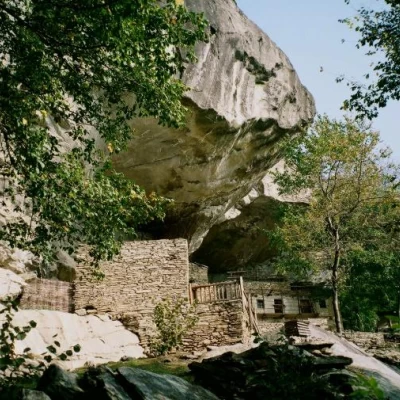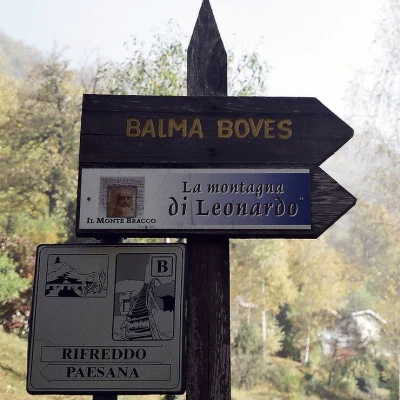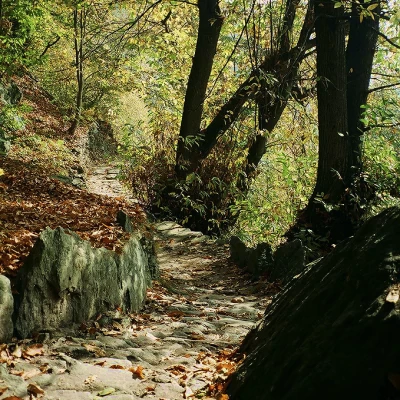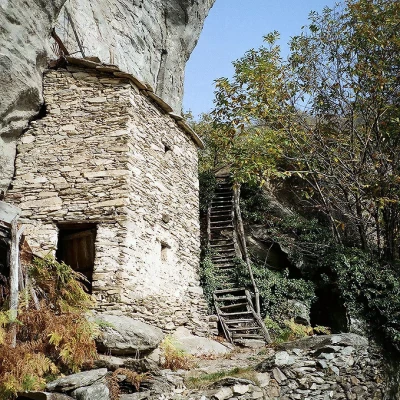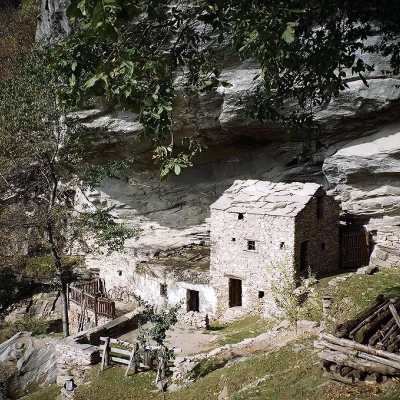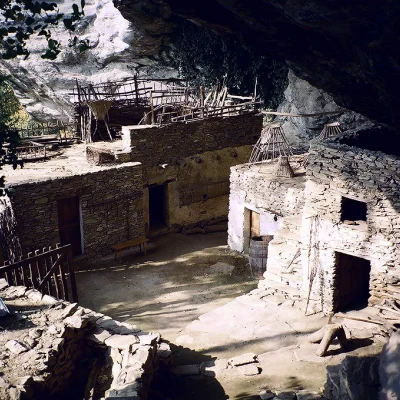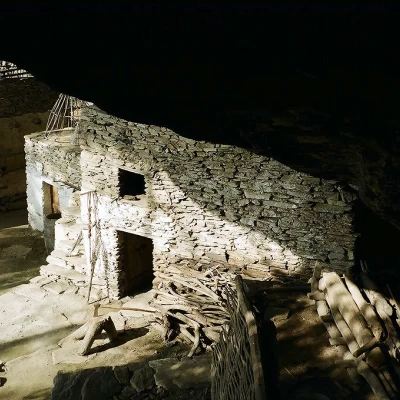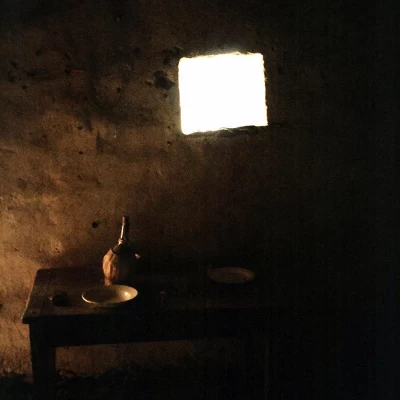Balma Boves, from Rocchetta
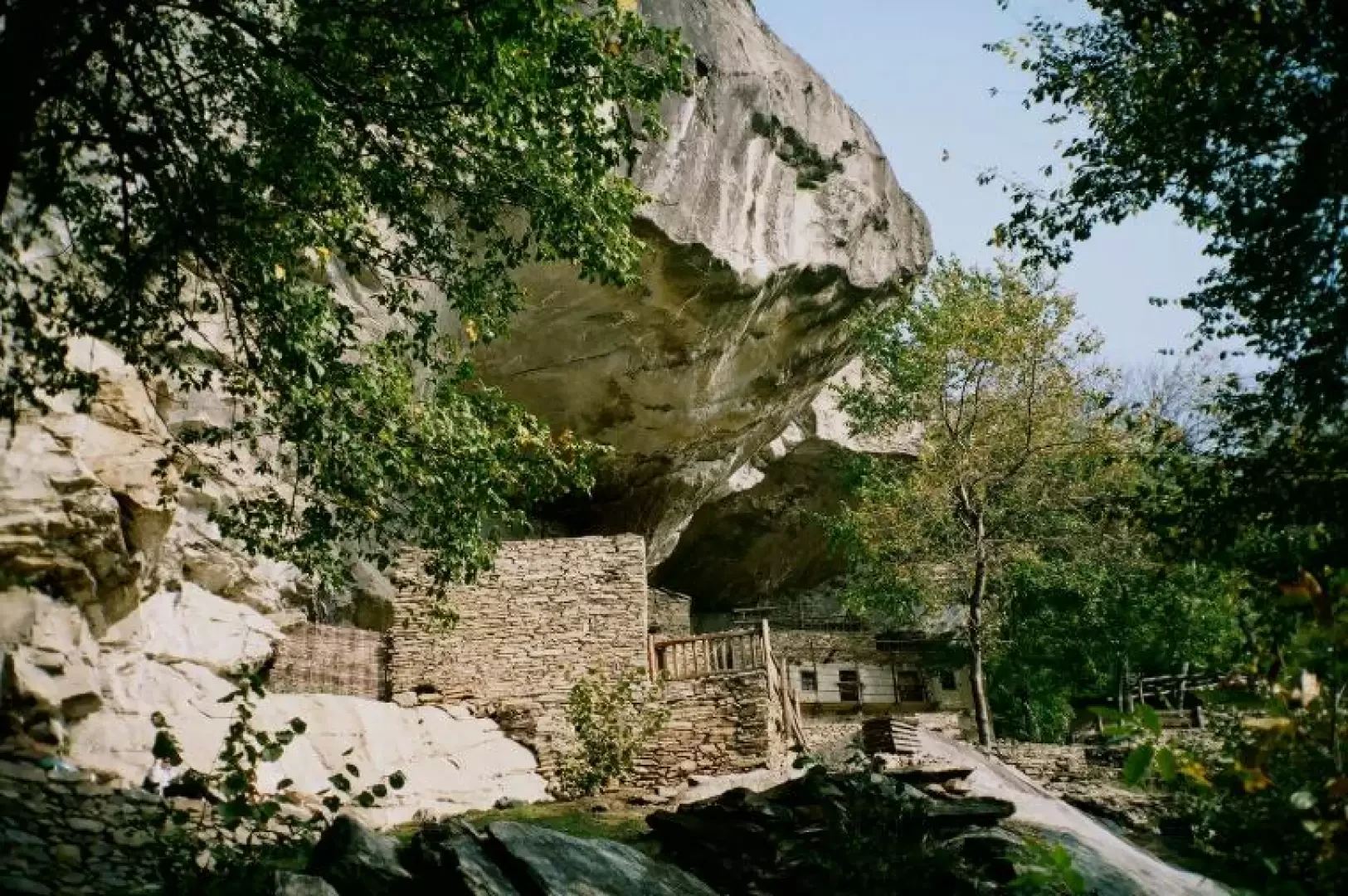
Access
From Turin you can follow two road itineraries to get to Sanfront:
- Take the Turin-Savona motorway then exit at Marene and continue on the main road to Savigliano then to Saluzzo and then in the Po Valley to Sanfront.
- Take the Turin-Pinerolo motorway, then, from Pinerolo, continue in the direction of Cavour and then Saluzzo until Staffarda Abbey, immediately after the abbey complex turn right and follow the signs for Sanfront.
Entering Sanfront, on the first roundabout, the Borgata Museo di Balma Boves is advertised; from here on simply follow the numerous signs, for about 3 km, until you turn right at the junction for Frazione Rocchetta and, having crossed the bridge, park on the cemetery square just before the village.
Introduction
When one speaks of mountains, one immediately thinks of the "gilded and glittering peaks" where "the chamois soars, the avalanche thunders from the immense ice rolling through the crumbling forests, but from the silences of the blue effusion the eagle comes out into the sun, and stretches out its solemn black flight in late sloping wheels", of Carduccian memory.
While it is certainly true that the mountain is also all of this, one must not forget everything that lies a little lower: by universally accepted definition, mountains are all the reliefs that extend above 600 metres and whose aspect is at least partially impervious. The mountain of this excursion is a 'low mountain', made up of human settlements (seasonal and permanent), of men who have dedicated their entire lives to making a hostile environment hospitable, who have endured hardships and privations unimaginable to us, who, stone by stone, have built dry-stone walls to create cultivable terraces, who have paved paths to make it easy for the passage of beasts of burden, who have lived in a constant struggle for meagre survival. However, it is all part of the criteria that have always informed the lives of our 'montagnards', as Cavallari Murat wrote, for the mountain man "...dignity consists in the use of the essentials and nothing more...".
Balma Boves probably represents a unique settlement episode; no matter how much one may lavish on descriptions, it will never be possible to match the effect of a visit. A small 'Mesa Verde', (the famous pueblo in Colorado) hidden in a chestnut forest, just a stone's throw from us: on the slopes of Monte Bracco in the Po Valley.
Description
The route, which is entirely signposted with wooden markers, takes about 30 minutes and is practically suitable for everyone of all ages.
From the cemetery, head up towards the houses in the hamlet and, ignoring the crossroads leading to the church, take the tarmac road on the right that snakes its way between the old houses, passes them quickly and begins to climb up into the woods, becoming a dirt road until you reach a viewpoint near two mountain huts. From here, take the path on the left that, having passed between the two buildings, becomes paved and flanked by large stone slabs set vertically into the ground. The path develops in a man-made environment, characterised by centuries-old chestnut trees and terracing supported by drystone walls. Balma Boves suddenly appears, heralded by a beautiful building on the left of the path, close to a high, slightly overhanging rock. Suddenly, one finds oneself catapulted into a reality that is different from the context of the woods around it: the characteristic flat-roofed buildings and the meticulous organisation of the spaces, the large rock roof that overlooks and protects everything together with the minimalism of the constructions, induce very particular suggestions.
On the return journey, once again arriving at the panoramic viewpoint near the two mountain huts, instead of taking the dirt road to the right that was followed earlier, we turn left, downhill along a very beautiful path that dives into the woods with a few bends and then becomes a dirt track and then a paved road that crosses the lower part of the hamlet of Rocchetta until it rejoins the main road just above the parking area near the cemetery.
For any further information and guided tours: www.marcovaldo.it
